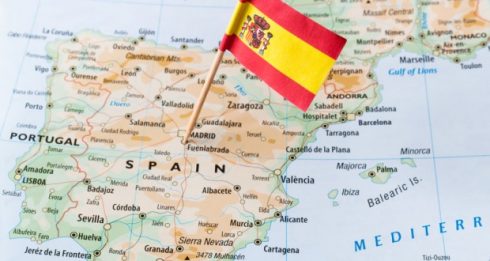Following our exclusive pictures last issue showing the destruction caused when golf developers move in, the Olive Press reports on a scheme in the north of Spain to turn a hamlet of 150 people into a city of 20,000 residents

WITH its aquifer dry and poisoned, the water supply for the 150 residents of Villanueva de Gomez is trucked into the hamlet.
Since 2004, villagers have been rationed to two litres of bottled water per day after its natural supply became polluted with arsenic and nitrates.
Despite this scarcity, both the regional government of Castilla y Leon and village council have given their backing to a huge scale urban project that will need almost three million cubic metres of water per year.
Besides three golf courses, developers want to build 7,500 homes and a luxury hotel on 800 hectares of virgin forest 100 kilometres north west of Madrid.
Plans are at such an advanced stage that 7,500 pine trees have already been felled and the development’s 30-kilometre network of roads dug out and asphalted.
Once completed, the Favera complex will bring 20,000 extra residents to Villanueva – effectively turning the farming hamlet into a small city.
Endangered birdlife
The sport, tourist and residential development has met with intense opposition, with trade unions and green groups claiming an area of high environmental importance is being bulldozed and irreversibly destroyed.
The pine forest is home to a breeding pair of Iberian imperial eagles (Aquila Adalberti), a species of bird protected by Spanish law.
In 2006, three eaglets were hatched in the forest.
Now, in a case brought by environmental groups Ecologistas en Accion and Centaursa, the Junta de Castilla y Leon is facing legal action for not adequately protecting one of the world’s most endangered birds.
“When passing the project, the Junta de Castilla y Leon did not take into account the pine forest is home to one of the Iberian imperial eagle. The regional government knew eaglets had been hatched yet did not declare the site a Crisis Area, as is legally bound,” Centaursa president, Carlos Bravo, said.
The regional water authority has also voiced its concerns over the development, stating that water simply “does not exist” to support such an ambitious project.
A spokesman for the Hydrographical Confederation of the Duero Valley said it is impossible to supply the 2.5 million cubic metres of water the projected 20,000 new residents need per year.
Developers insist, however, the golf course will be maintained by recycled water from the 7,500 new homes – yet there is no word on from where the residential complex will get its water.
“Legal”
The golf and residential project has left the village divided. Some are looking forward to the wealth it will generate while others are mourning the inevitable loss of traditional village life.
Others claim sinister motives lie behind the project, with the word Marbella painted over the village sign, welcoming visitors to Villanueva de Gomez.
The Costa del Sol resort has been at the centre of several high profile corruption scandals in recent years.
“The tranquillity of the village is going to disappear for ever. Half of Villanueva already belongs to the development company,” one local farmer said.
“All I see now when I wake up is the cloud of dust the lorries bring with them,” another said.
Village mayor José Martín Llorente defended the Favera complex, claiming it legal and that the countryside in the area “has been dying for years.” According to the council leader, the pine forest was declared fit for development in 1980.
Then the property of plastics company Union Resinera, it was sold to developers in 1999.
A spokesman for Inveralde, the development company behind the Favera complex, confirmed the macro-project is legal and that it complies with regional building and environmental regulations.
He also said the company is planting more than 300,000 pine trees in the forest to compensate for the loss of land.






